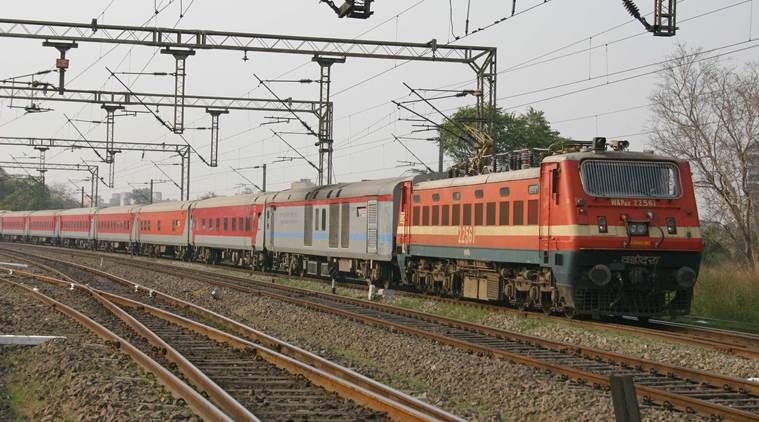
Even as the first trainset, Train -18, prepares for flag off by Prime Minister Narendra Modi on February 15, Indian Railways has quietly crossed a milestone for another kind of train technology to achieve higher speeds for its Rajdhanis and reduce travel time without incurring much extra cost.
The “push-pull” technology, wherein one engine is attached to the rear while another at the front pulling coaches, was used to run the Mumbai Rajdhani vie Central Railway route Wednesday. The technology received the Commissioner of Railway’s safety clearance Wednesday morning and speed certificate from the Research Design and Standards Organisation after successful trials last week. The speed certificate issued is for 130 kmph between Delhi and Mumbai on the Rajdhani Express route through Central Railway. This is expected to be the NDA government’s next showcase in the speed upgrade project of Indian Railways.
The two engines, hard-wired to act as one, not just provide additional power to the train but also reduce the acceleration and deceleration times of the train significantly, making higher averages speed possible. Railways plan to deploy these trains as Rajdhanis, sources said. These are existing locomotives pulling the Rajdhani-type Linke Hoffman Busch coaches. “The beauty of this accomplishment is that we can achieve much higher average speeds and reduce travel time with our existing stock of coaches and engines,” said a senior Railway ministry official.
While the trainset is based on distributed power technology which does not require a locomotive, the “push-pull” technology uses two locomotives where tractive power is concentrated on both ends. In Europe, France’s TGV, in the US Amtrack’s Acela, in South Korea the KTX, in Spain Talgo are some of the railways abroad running long-distance fast services with this technology.
While issuing the speed certificate, the RDSO has laid down certain stipulations like the rear engine must always push less than how much the front engine pushes. It has said that the rear engine must be the “slave” to the front engine which is the “master”. While the engines are wired with a sophisticated technology to act as one, the standards organization’s stipulations are meant to avoid safety risks. Engineers toldThe Indian Express that the trials were extensive and successful.
While the new technology has got a go ahead to run only as fast as the tracks are designed for, faster acceleration and deceleration help save time in numerous speed restrictions, curves as well as the many stoppages, all adding up to saving journey time.